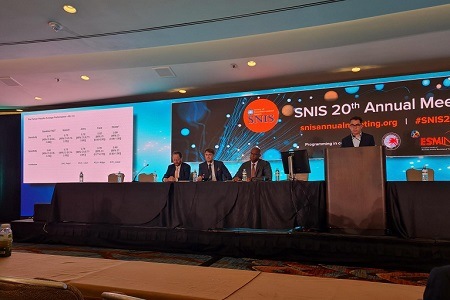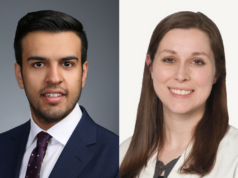
During a late-breaking abstract session at this year’s Society of NeuroInterventional Surgery (SNIS) annual meeting (31 July–4 August, San Diego, USA), researchers discussed a smartphone application that can reliably, autonomously recognise patients’ physical signs of stroke thanks to the power of machine learning algorithms.
In the study, researchers from the University of California Las Angeles (UCLA) David Geffen School of Medicine (Los Angeles, USA) and multiple medical institutions in Bulgaria used data from 240 patients with stroke at four metropolitan stroke centres.
Within 72 hours of the start of the patients’ symptoms, researchers used smartphones to record videos of patients and test their arm strength in order to detect patients’ facial asymmetry, arm weakness, and speech changes—all typical signs of a stroke.
To evaluate facial asymmetry, the study authors used smartphone-enabled machine learning to analyse 68 facial landmark points. To test arm weakness, they used data from a smartphone’s standard internal 3D accelerometer, gyroscope, and magnetometer. To determine speech changes, the researchers used mel-frequency cepstral coefficients—a typical sound recognition method that translates sound waves into images—to compare normal and slurred speech patterns.
They then tested the app using neurologists’ reports and brain scan data, finding that the app was sensitive and specific enough to diagnose stroke accurately in nearly all cases.
“It is exciting to think how this app and the emerging technology of machine learning will help more patients identify stroke symptoms upon onset,” said Radoslav Raychev (UCLA David Geffen School of Medicine, Los Angeles, USA), who delivered these findings at SNIS 2023, and is the CEO and co-founder of Neuronics Medical, which develops the FAST.AI app assessed in the present study. “Quickly and accurately assessing symptoms is imperative to ensure that people with stroke survive and regain independence. We hope the deployment of this app changes lives and the field of stroke care.”
Concluding his SNIS presentation, Raychev reported that these preliminary results confirm that smartphone-enabled machine learning algorithms can reliably identify acute stroke features “with accuracy comparable to neurologists’ clinical impression”.













